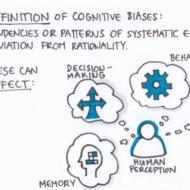Posted by Managementguru in Change management, Decision Making, How To, Human Resource, Learning, Productivity, Time Management
on Jan 14th, 2020 | 0 comments

Working in business is a promising career path because there are a lot of different directions you can go. The opportunities are endless if you continue to work hard and are dedicated to improving your skills over time. Be glad to know there are a few actions in particular that you can take if you want to quickly advance your business career. This way you can get on the right path to becoming a successful and productive employee with the potential to grow and learn over the years. It’s going to take time to get ahead because of all the competition, so be patient with yourself as you develop into the leader you know you can be. Further Your Education A good first step in the process of advancing your business career is to focus on furthering your education. For example, take advantage of your down time by studying for a Suffolk University Online MBA and earning your advanced degree. In this program, you’ll learn the skills and abilities you’ll need to solve complex problems at a global level and how to better analyze data. It’s a great way to polish up your resume and make sure you’re keeping up to speed with the ever changing landscape of the business world. Find A Mentor You may also find it useful to secure a mentor to help you advance your business career. You can bounce ideas off of this person about your performance and ask questions that will help you become a more desirable employee. Pinpoint someone who’s been in your shoes before and has been able to work their way up the corporate ladder. This way you can follow in their footsteps and also hopefully avoid any same mishaps or mistakes they made along the way. Set Goals & Track Your Progress You’ll get a lot further in your business career when you set goals for yourself and what it is you want to achieve in your profession. Not only write down your objectives, but then construct a timeline for how quickly you want to meet each goal. Monitor your progress as you go and don’t be afraid to make adjustments based on your results. For example, aim to go after a promotion at work or complete an online class in an area where you find you struggle the most. Having goals in place will help you to move forward in a promising direction instead of getting stuck in one place and lacking the motivation to advance in your career. Speak to Your Boss In addition, be open and honest with your boss about how you feel about your job and career. Let them know if you’re bored and how you feel they can help better support you and succeed. Discuss chances for you to showcase your skills and abilities in your performance reviews by setting goals together that you want to meet in the upcoming year. Talk about what they feel your strengths and weaknesses are so that you can apply this information while going after the next big promotion opportunity. Always be Networking It’s also in your best interests to always be networking and meeting new people inside and outside of work. Be proactive and use your network for support whenever you’re feeling lost or confused about how you should proceed. It’s possible someone you meet will have good career advice for you or know of a job opening that will be a better fit. Advance your business’ career by staying in touch with those you meet and helping each other out as you each work on getting ahead professionally. Take on More Responsibility at Work...

Posted by Managementguru in Business Management, Decision Making, How To, Human Resource, Productivity
on Nov 1st, 2018 | 0 comments

“If there’s something you really want to believe, that’s what you should question the most.” ― Penn Jillette To efficiently run a business, it’s necessary to think on your feet. You are required to make thousands of decisions and judgment calls daily. And while there is a wealth of information at our fingertips and communicating with colleagues or employees across the country takes only seconds, all this can lead to an information overload. In order to manage a business productively, we rely on mental shortcuts that allow us to get around this overflow of information. These mental tricks can also help us get around limits in memory, time, or a lack of information. These cognitive biases are necessary to help us make the sheer number of decisions necessary every day. However, cognitive biases can also lead you to make poor decisions and judgments regarding your business. Because they allow you to make decisions that don’t rely on logic, they can hold you back from doing your best work as a leader. That’s why it’s important to be aware of the common mental traps that you fall into as a manager of a small business. As your decisions can have a major impact on your bottom line, being more aware of your unconscious biases can help you find more success as a manager. For example, many people struggle with planning and scheduling projects. It is common for tasks to go out of scope or miss their deadlines. This is in part due to a cognitive bias called the “Planning Fallacy.” This bias causes you to underestimate the amount of time it will take to complete a task. However, once you are aware of this tendency, you can plan more time for your assignments than you think you will need and meet your deadlines. To help you in all your small business decisions, check out this infographic Fundera created on some of the more common biases and how to avoid...

Posted by Managementguru in Business Management, Decision Making, Human Resource, Leadership, Organisational behaviour, Training & Development
on May 18th, 2016 | 0 comments

Managing people require a completely different skill set than managing tasks. The transition from being an individual contributor to someone responsible for the work of others and team performance results in a steep learning curve. Learn how to motivate, delegate, communicate and lead. Play to your strengths and improve on key weakness areas. With an emphasis on building high achieving teams, dealing with an increased workload and developing the influence, assertiveness and confidence necessary to be an effective manager or supervisor – this course will ensure you hit the ground running.

Posted by Managementguru in Decision Making, How To, Human Resource, Social Media
on Jan 19th, 2016 | 0 comments

This is all about the art of changing hearts, minds and actions of people whom you move with, interact with every day and possibly want them to like you to get things done. What influences people to say yes? These are scientifically validated principles of persuasion that provide for small, practical and often costless changes that can lead to big differences in your ability to influence and persuade others in an entirely ethical way. What are you waiting for?

Posted by Managementguru in Change management, Decision Making, Entrepreneurship, How To, Human Resource
on Jul 23rd, 2015 | 0 comments

I was going through this quote by Vince Lombardi the other day and couldn’t control my amusement and laughter for some time. “If you aren’t fired with enthusiasm, you will be fired with enthusiasm.” But the truth behind this statement looms large in front of all HR professionals when they start working for an organization in whatever capacity. Results, Targets, Closing the sale, Clinching the deal are the inevitable management mantras that drive the executives crazy. Isn’t it funny that it is very important to keep the morale high of the survivors during a layoff strategy! How on earth one can expect such a thing to happen when you know the sword is dangling above your head too! Please remember, “Resources are hired to give results, not reasons.” You need to be a star performer the first time and every time. Why Downsizing Happens? When the management of an organization finds out that their organization is not operating at peak efficiency, they naturally look for ways to make the organization more productive. This is seldom accomplished via organizational downsizing, which is a reduction in organizational size and operating costs implemented by management in order to improve organizational efficiency, productivity and/or the competitiveness of the organization. Courtesy: Cartoonstock.com Organizational downsizing affects the work processes of an organization since the end result of the downsizing is typically fewer people performing the same workload that existed before the downsizing took place. Download this Team Meeting Planner and Let us Know if You Found it Useful Team-Meeting-Agenda-PlannerDownload The act of downsizing results in two categories of people: victims, the people who involuntarily lose their jobs due to organizational downsizing, and survivors, the employees who remain after organizational downsizing takes place. When is Downsizing the Answer and How to Do it Right? “When downsizing is a knee-jerk reaction, it has long-term costs.” In order for an organizational downsizing to be most effective, management must connect openly and honestly with their employees concerning the reason for the downsizing and the downsizing plan. Managers also need to listen to employees and provide comfort when necessary in order to keep the morale high among the survivors of the downsizing. It is also important that management take steps to prepare the workforce in advance of the downsizing. Proper planning includes outplacement strategies, which is the process of supporting former employees in finding new employment and training and re-skilling the remaining workers into their new jobs. By treating the victims of downsizing fairly and compassionately, the survivors of the downsizing are more likely to remain loyal to their organization. Best Practices for Managing the Downsizing Process Be transparent about the current conditions that the organization faces and the potential impact on the workforce.Treat laid-off employees with respect and sensitivity.On the day of discharge, give employees options on how they want their exit handled.Ensure that procedures used to make decisions are seen as just and fair.Carefully examine the impact of employment downsizing on all HR systems.Give survivors a reason to stay and new hires a reason to join. Kim Cameron’s 3 Types of Downsizing Strategies 1. Workforce Reductions – short-term strategy to cut the number of employees through attrition, early retirement or voluntary severance packages, and layoffs or termination. 2. Work Redesign – medium-term strategy in which organizations focus on work processes and assess whether specific functions, products and/or services should be eliminated. 3. Systematic Change – long-term strategy that changes the organization’s culture and attitudes, and employees’ values, with the goals of reducing costs and enhancing quality. Why Do Organizations Downsize? Declining profitBusiness downturn or increased pressure from competitorsMerging with another organization, resulting in duplication of effortsIntroduction of new technologyThe need to reduce operating costsThe desire to...










